Montecatini Terme travel guide
Montecatini Terme is arguably Italy’s most famous spa town dating back to Roman times. It is situated in Tuscany, between the beautiful cities of Lucca and Florence. Whilst the modern day town oozes elegance, it has had a rather tumultuous past. Over the years, it was the site of many battles over contested borders and in the 16th century was nearly razed to the ground as a result of the destruction ordered by Cosimo dei Medici. Of course, it was slowly rebuilt, and in 1477, there are documents detailing the first ‘organised spa’ in Montecatini Terme.
Visitors first started to be attracted en masse to the the town’s famous healing thermal waters (which it is possible to drink) from the 16th century onwards. When the first grand spas were built in the late 1700s, they quickly attracted the rich and famous of the day including a number of artists, musicians and composers such as Verdi, Giacomo Puccini and Richard Strauss. And this accelerated following the construction of Lo Stradone dei Bagni (now Via Verdi) in the late 18th century. Even today, visitors will come to indulge in the plethora of spas as well as to enjoy Montecatini Terme’s many shopping, dining and sporting offerings.
What to see and do in Montecatini Terme
A good starting point for any visit to Montecatini Terme is the central piazza – the Piazza del Popolo. Lined with hotels, shops, cafes and restaurants, the square has a real buzz to it and it’s a great place to soak up the local atmosphere.
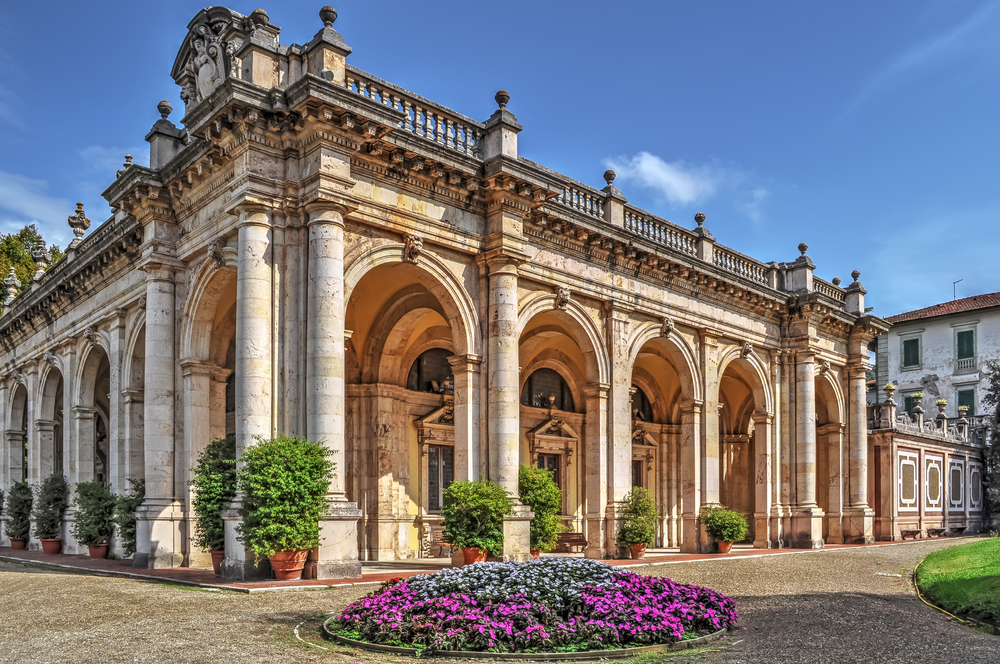
No visit to Montecatini Terme would be complete without a visit to the Parco delle Terme. Here, each of the nine sulphate springs are enclosed in their own buildings, each one of which is a stunning example of Art Nouveau architecture. Take time to relax and book in for some indulgent spa treatments including massages, mud baths and other beauty treatments. There are three spa complexes to choose from where you can benefit from the thermal waters – the Terme Tettuccio, the Terme Excelsior and the Terme Redi Thermal Complex. Each offers something slightly different.
The Terme Tettuccio was built between 1779 and 1781 and renovated in 1928. It’s arguably the most famous of the spas in Montecatini Terme. This is a drinking spa and visitors can try the water from any of the four taps here. The water is supposed to be good for a range of different ailments from stomach upsets to digestive issues to kidney and liver problems and diabetes. Even if you don’t want to try the waters, it’s a lovely spot for a coffee as the gardens here are beautiful, filled with everything from palm to pine trees and from wisteria to acacias. Coloured glass panels light up the front entrance and there is a beautiful bronze pool.
The Terme Excelsior spa, in contrast, is where you should go if you’re looking for a relaxing spa treatment such as a massage or facial. Of course, this spa is similarly famed for its use of thermal waters and also offers treatments for those with ailments.
The third of the spas – the Terme Redi Complex – is located slightly separately on the Viale Alessandro Bicchierai. This is a much more modern 1960s building but they also offer a number of authentic treatments. It’s also where you should go if you want to immerse yourself in the healing properties of the thermal baths.
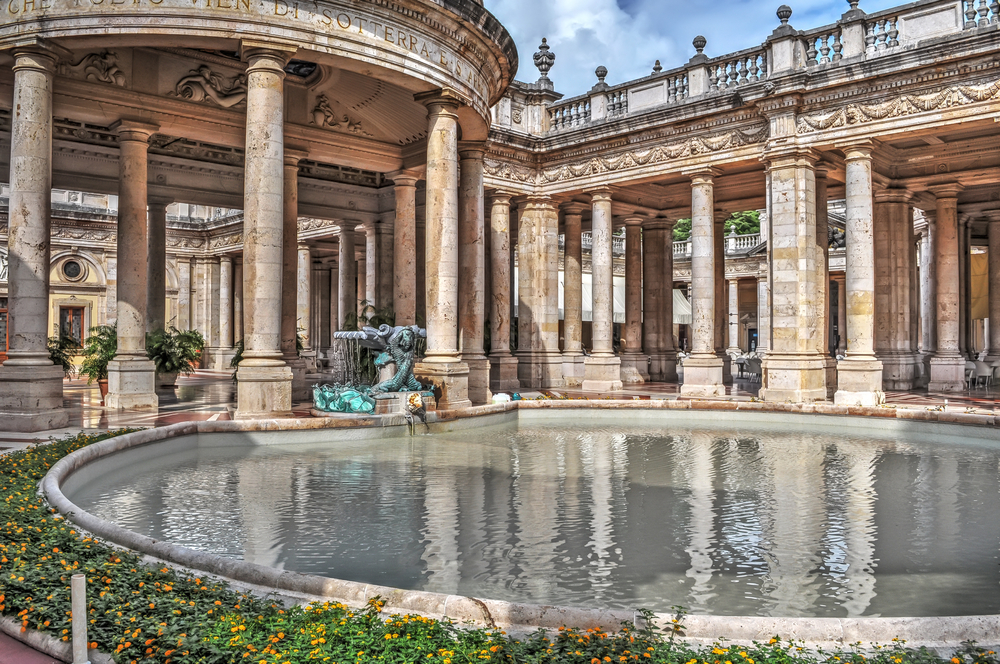
Take a stroll along the Viale Verdi (also known as the Vialone dei Bagni). There are a number of important buildings and monuments along this road including the Palazzina Regina (once the Summer residence of the Medici family), the War Memorial designed by Giuseppe Petroni and the Padiglione dei Sali (Pavilion of Salts). In times past, visitors would have been able to purchase their salts here however it’s now home to a number of businesses. Also on this road is the early 20th century Town Hall. On the first floor of this building, visitors will find an excellent museum – the MO.C.A (Montecatini Contemporary Art Gallery). It holds works by artists such as Joan Miro and Claes Oldenburg.
If you’re an art lover, you should also make a trip to the Scalabrino Art Academy where there are more than 150 art works by artists such as Galileo Chini, Primo Conti, Amalia Dupre and Lorenzo Viani.
As you enjoy a stroll around Montecatini Terme, you can’t fail to notice the sheer number of fountains in the town. Some of the most important include the Fountain Mazzoni in front of the railway station which dates back to the 1930s. Modern in design, it’s quite contemporary even by today’s standards. The Fountain of Shingu in the Piazza Giusti is a fountain that stands just over three metres in height and cleverly combines both sight and sound. Water runs along the tubes of a mobile sculpture designed by Japanese artist Susumo Shingu producing a calming lyrical sound. Next is the Scultura d’Acqua Fountain by Pol Bury in the upper park of the thermal park. Built in the 1970s, this is the most recent of the fountains. Like the Fountain of Shingu, it again is not just a visual spectacle but also produces sound effects, this time created by the force of the water that flows through steel cylinders. Finally of note is the Guidotti Fountain. Dating back to 1913, this bronze and travertine fountain features streams of water which gushes out from horns held by putti (cherubs) riding dolphins into four basins which in turn flow into a large tub below.
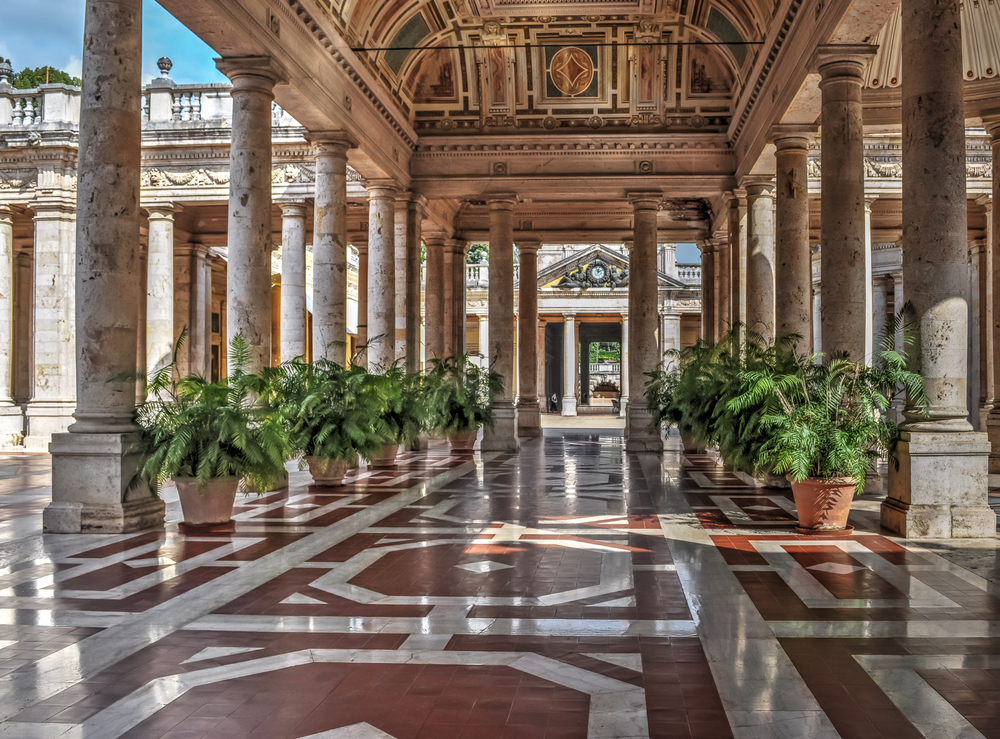
Shopaholics will find plenty to satisfy them in Montecatini’s shops, home to a number of designer brands including Gucci. Montecatini Terme has a bit of a reputation for being the playground of the rich and famous and many of its stores reflect this. However, don’t worry, there are plenty of lovely independent boutiques for those on lower budgets too. If you’re looking for designer brands, then focus your attentions on the Corsa Roma, the Piazza del Popolo and the Corso Giacomo Matteotti. These streets are lined with clothes, jewellery and cosmetic shops. If you’re looking for a souvenir to take home, then opt instead for the Via Pierto Grocco.
There is also a theatre in Montecatini Terme – the Teatro Verdi. In the past, Montecatini Terme was the stomping ground of many famous visitors including Guiseppe Verdi and Giacomo Puccini, and their legacy lives on today in the town in the form of the Teatro Verdi.
Sports lovers will also have plenty of opportunities to ensure that they enjoy their time in Montecatini Terme. There are tennis courts here, swimming pools, cycle tracks and even a racecourse! The Ippodromo Sesana was constructed in 1916 by Baron Giuseppe Patrone but was recently restored giving it a new lease of life.
Visitors must also enjoy a trip from Montecatini Terme to Montecatini Alto. Whilst you can drive the 5 km road that runs between them, we think that the latter is much better reached via a 19th century funicular. This runs every 30 minutes between the months of April and October and the journey takes just under 10 minutes. Two red coloured cable-operated carriages run in opposite directions along the 1077 metre track, passing briefly halfway along. It’s rather charming!
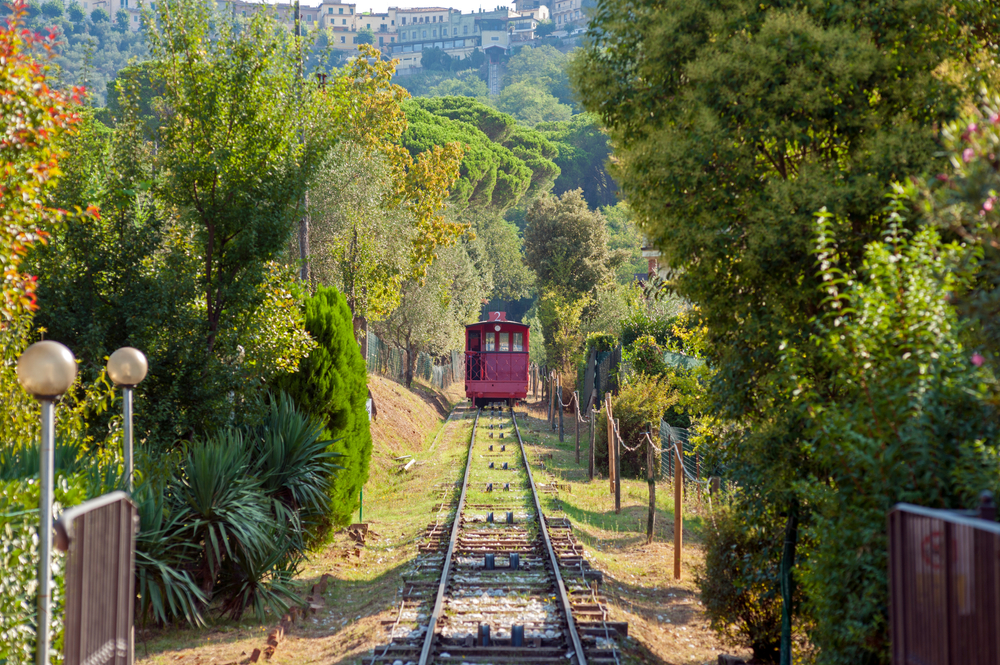
At the top, there is a viewing platform where you can enjoy some terrific views of Monsummano below. Visit in the Summer and enjoy a few drinks or a bite to eat in the main square – the Piazza Giusti – before heading back down. Opt to take the funicular back down or walk down the rather steep slopes which will take around an hour. Or escape from the Summer sun for a short while by visiting the Grotta Maona, a 15 million year old cave laden with stalactites that is found a couple of kilometres below the town. Temperatures inside are at a constant 15 degrees whatever the time of year, so very pleasant to visit all year round.
Montecatini Alto is also home to the Torre dell’Orologio, a Medieval clock tower, as well as the 12th century Romanesque Church and Convent of Santa Maria. Other churches of note here include the earlier 11th century Church of St Peter the Apostle (home to a beautiful white marble font and a number of important frescoes), the Church of the Carmine and the Convent of Santa Margherita and the chapel in the square which is built into the Tavarnelli Tower.
Events in Montecatini Terme
Montecatini Terme holds a weekly market every Thursday. Located on the Via di Maratona, it’s the perfect spot to purchase some delicious food and drink as well as clothing, household items and more. There is also a covered market (Mercato Coperto) every Thursday and Saturday morning at the Via Mazzini. This is best place to buy fresh fruit, vegetables, local produce, plants and flowers.
Where to stay in Montecatini Terme
Villa Mona is a stunning 5 bedroom villa in Montecatini Terme. Sleeping up to 12 guests, it’s only 1.5 kilometres from the heart of Montecatini Terme so it shouldn’t be too much of a struggle to tear yourself away from your private swimming pool to head to one of the town’s spas or to one of the many restaurants for a bite to eat! There is plenty to occupy the children whilst you relax and unwind too including a table tennis table outside and billiards and table football inside.
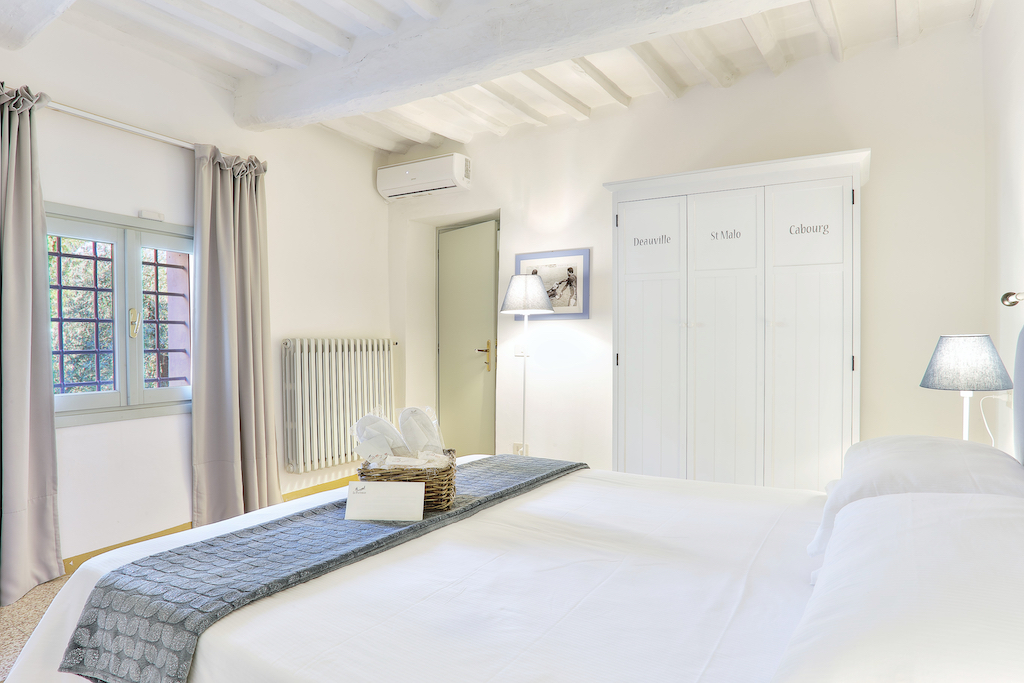
Alternatively, opt for Villa Alto, a stunning six bedroom villa in Montecatini Alto. Its elevated position means it enjoys spectacular views over the surrounding countryside. Sleeping up to 14 guests, it’s also the perfect Tuscany villa for those looking to celebrate a special occasion, with wonderful indoor and outdoor entertainment spaces.
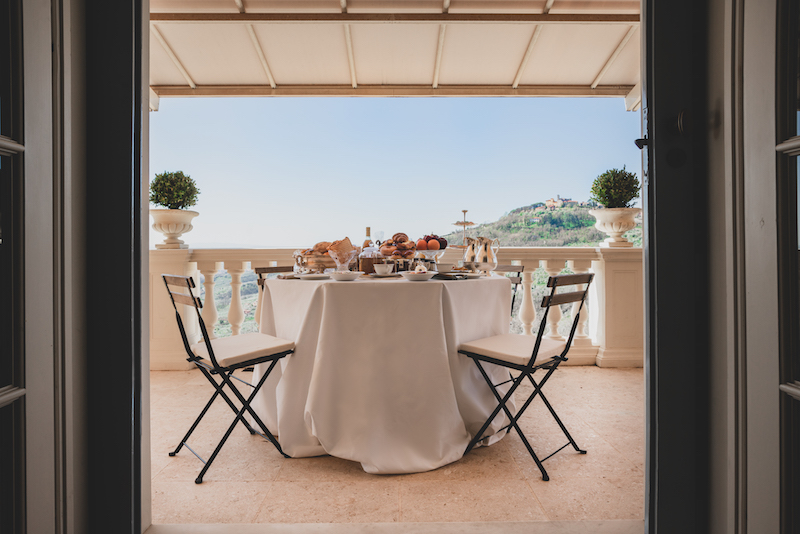
How to get to Montecatini Terme
By train: Montecatini Terme can boast two train stations – Montecatini Terme – Monsummano and Montecatini Centro. The former is the larger of the two and is located about a 10 minute walk from the heart of the town. Montecatini Centro is smaller but is situated just a 2 minute walk from the Piazza del Popolo
By air: The nearest airport to Montecatini Terme is in Florence, approximately 40 km away. Otherwise, Pisa is only 60 km in the other direction. Alternatively, you can even fly into Bologna Airport. The transfer time by car from here to Montecatini Terme is just under 1.5 hours.
By car: Montecatini Terme is easy to reach by car but drivers should be aware that, like so many historic Italian towns, it does have a ZTL (traffic limitation zone) in place. Make sure you don’t drive into this area if the sign indicates ‘Attiva‘ or ‘Attiva Closed‘ as you will find yourself slapped with a hefty fine. If it is displaying the words, ‘Non Attiva‘ then you are allowed to enter. Don’t worry – there are plenty of free car parks outside the ZTL area which are convenient to use. These include the Area di Parchaggio in Via di Maratona, the Parcheggio Garuito on Viale Leonardo da Vinci and the car park in the Viale Mario Bustichini. You will also find colour coded parking bays in Montecatini Terme. White bays are free to park in. Yellow bays is resident parking only and a permit is required. You can park in the blue bays but you must pay at the meter.
By bus:
There are two main bus companies operating to and from Monteacatini Terme. These are Marino Autolinee and Flixbus.


